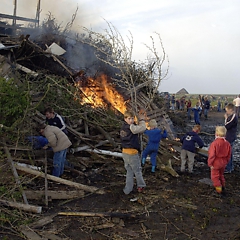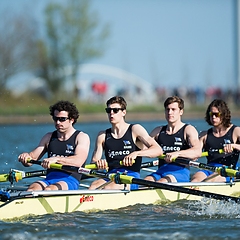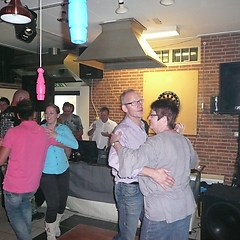The flower parade in Vollenhove is a cultural festivity, linked with the ‘Venose’ (dialect for Vollenhove) Parade Festival. This seven days’ festival takes place in the week before the last Saturday of August, with the flower parade as the absolute highlight on this Saturday. During the parade week the dahlia queen and the dahlia princess are elected. Every participating group chooses its own theme and the design. The floats may contain other materials than dahlias, like cane, cabbage leaves, sand, plastic or paint. Many stories, myths and sagas are depicted in the Vollenhove Flower Parade. There is also much attention for by-play, for theatre, light, sound and movement. The floats have self-driving frames and movable parts in the construction. The Parade Saturday starts in the morning with the Children’s Parade. In the afternoon and the evening the big floats are presented to the public. The whole festival is enlivened by marching bands and fanfares from home and abroad, with a tattoo in the afternoon. There is a strong element of competition. Everyone does the best he can to make the winning float. But in the end, at the concluding float builders feast, everyone is in fact a winner. The social aspect is of great importance.



